Very little has changed in Lukiškės Prison 2.0 in Vilnius since the last prisoners left in 2019.
Imagination is not a requirement when exploring Lukiškės Prison 2.0 as very little has changed here since the last prisoners left the buildings in 2019. Artists studios, bars and function rooms now nestle inside the austere, shabby buildings.
When Lukiškės prison complex was built in Vilnius in 1904 Lithuania was part of the Russian Empire. This prison replaced the monasteries which had been used as prisons during the nineteenth century. At the time it was one of the most modern confinement facilities and displayed several unusual characteristics.
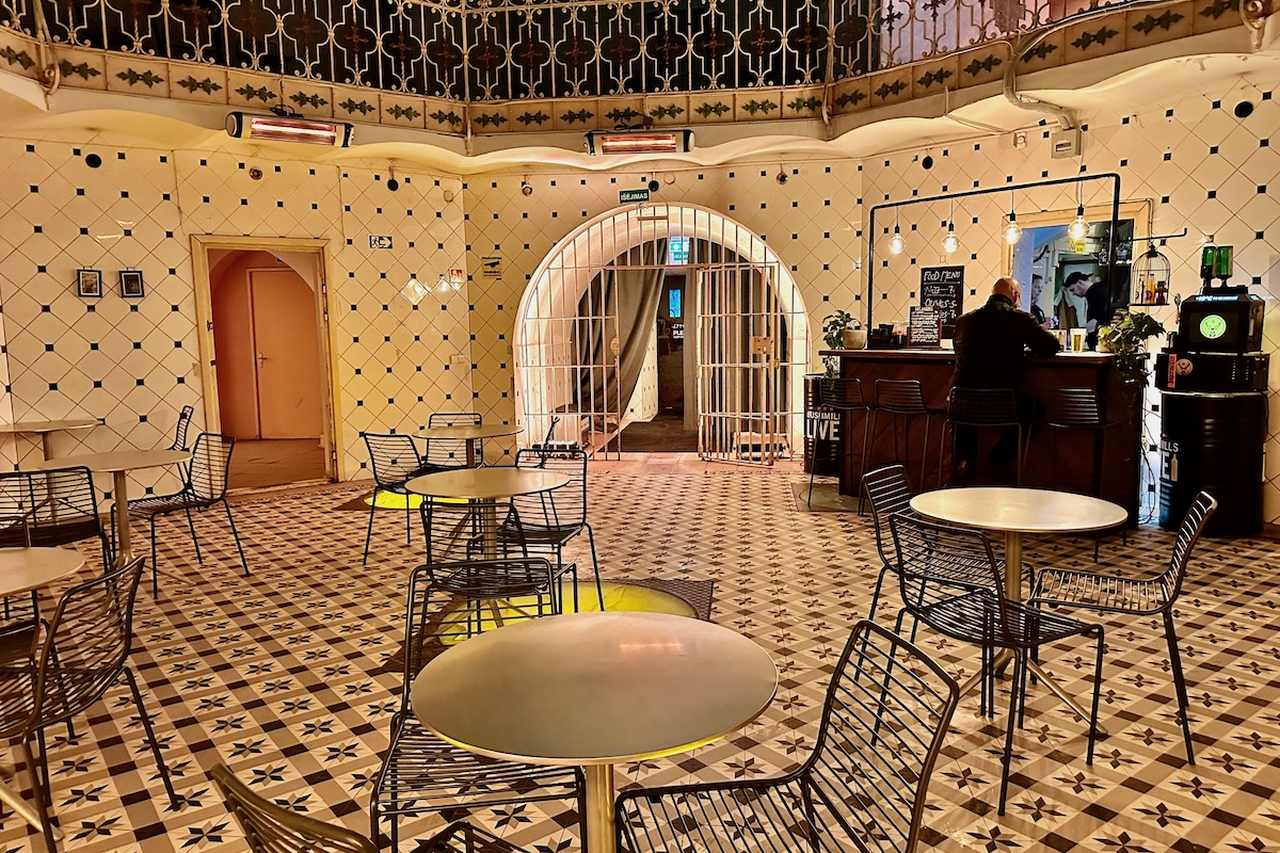
Unusually for a prison, it was built in the centre of the capital, close to the main streets. It had spaces designated for punishment, administration, the provision of health care, a kitchen, a bakery, baths, an ice cellar, and laundry. And, it was the only prison that accommodated Russian Orthodox, Roman Catholic and Jewish worship. Very little remains of the Roman Catholic Chapel but the Orthodox Church of Saint Nicholas still towers above the multi-fenced perimeter.
Lukiškės Prison complex has survived both World Wars and the Soviet occupation. Many political prisoners have been confined within the heavily guarded complex including Lithuanians, Belarussians, Poles and Jews who did not meet the approval of changing political regimes. Some well-known social activists, political figures, writers and signatories of the Act of Independence of Lithuania have spent some time here. Although the prison was built to house around 700 prisoners numbers swelled to thousands and as many as 8 prisoners would be crammed into the tiny bare cells.
Conditions improved when Lithuania applied for membership in the European Union. The need to comply with principles of human rights meant the number of occupants was reduced and some creature comforts were added to the cells.
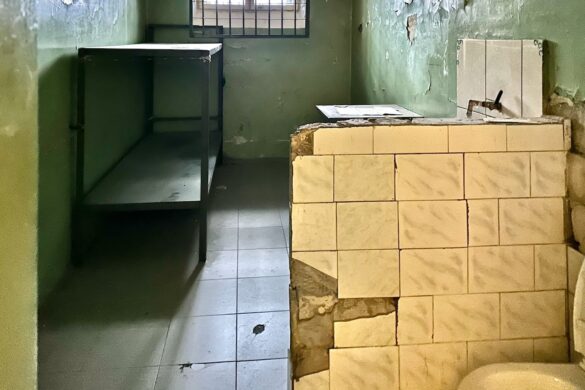
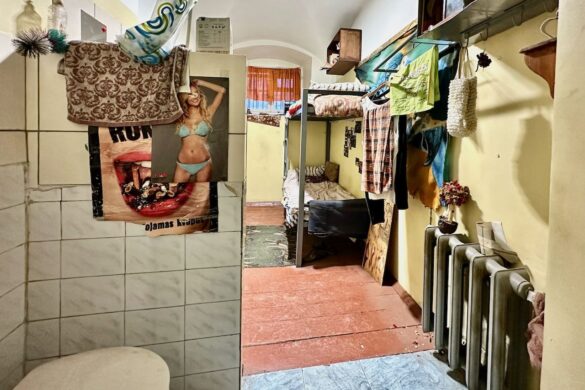
Lukiškės functioned continually as a prison for over 100 years. When the prison opened its doors to the public in 2019 it was renamed Lukiškės Prison 2.0, signifying a new era for the complex. Artists, musicians, and creators have set up their studios in various areas of the building which now offers an alternative venue for musical, cultural, artistic events and private functions. The exterior and interior of the prison itself have been preserved and visitors can embark on a journey through one hundred years of history on a guided tour.
A guided tour of Lukiškės Prison 2.0
My guided tour started by the main entrance of the prison standing by the grid where vehicles coming and going would be checked for forbidden items coming in and prisoners attempting to get out. We moved on to the reception area when incoming prisoners would be processed.
While the prison officers were examining their cases they would be forced to stay in tiny rooms known as shoeboxes for up to six hours – four in each room. Next, they would be searched for illegal objects and then scanned for metal items inside their bodies. My eyes watered at the thought of an iPhone being discovered inside a returning prisoner. Apparently, it takes some training to insert objects of this size but tiny mobile phones (available online) are easy to secrete internally.
A climb up the several flights of steps to the top corridor where prisoners who committed the most serious crimes were confined. Very strict rules applied regarding combinations of cell mates – no mixing of sexes and juveniles occupies a separate area. Descending to the basement we walked along a row of single occupancy cells which would have held those in solitary confinement – sometimes for 6 months. A prisoner hoping for a reprieve from the death sentence would also be held in one of these cells. Executions took place inside the prison. One executioner firing one rifle. The death sentence was not abolished in Lithuania until 1998.
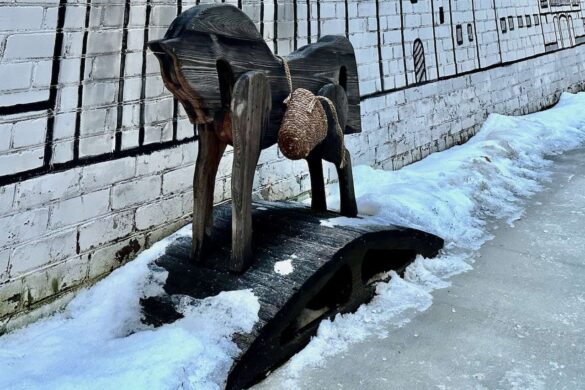
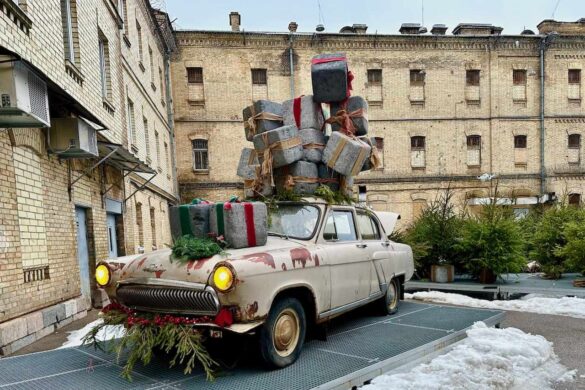
Outside the prison building are rows of roofless cells were the worst criminals were allowed to stand to watch the sky above. They spent the rest of the day in their cells, where they had all their meals. Other prisoners were allowed to take part in activities including educational courses. These outdoor cells have now been partially covered to protect the paintings done on the back walls by the prisoners. Although the electric fences and guard dogs are no more the high barbed walls remain and clearly escape was impossible.
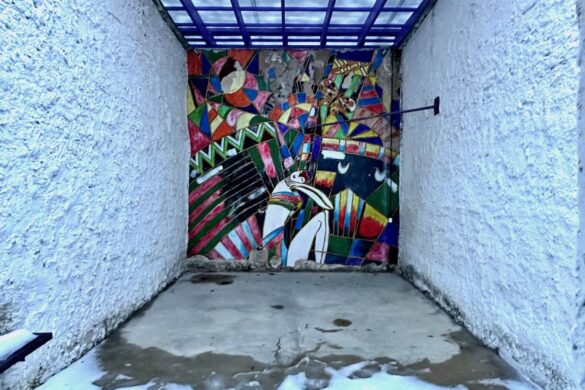
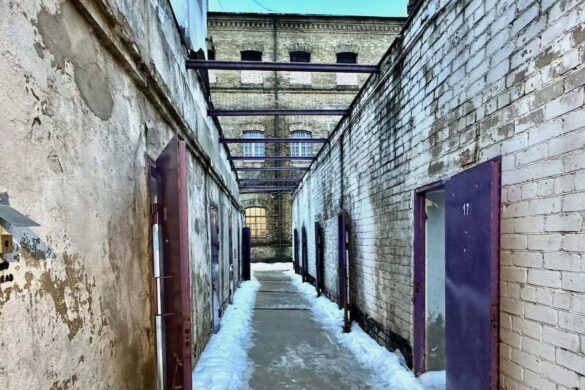
There was one successful escape by claiming the identity of a prisoner about to be released. He was soon back – old habits
die hard. Meanwhile, the other prisoner was detained for another year rather than being released when the ‘mistake’ was discovered. No wonder Lukiškės had a reputation for mental cruelty.
Today the strains of lively music, the chink of glassware and the murmur of chatter echo through the buildings of Lukiškės Prison 2.0. It has become a major attraction in the city of Vilnius. It has also been used in in films and adverts. Visitors may spot the prison cell used in the Netflix drama Stranger Things season 4 or the prison in a Gucci commercial.
FACT FILE
To learn more about the prison and its secrets book tickets and a guided tour here.
FLY: Currently the only direct flights to Vilnius depart from Luton and Stansted airports with Wizz Air and from London City airport with LOT but there are several alternatives via airline hubs such as Swiss Air via Zurich and Finnair via Helsinki. There is a regular public bus service from Vilnius Airport to the old town.
STAY: Artagonis Art Hotel, Vilnius, Lithuania Artagonist Art Hotel located in Vilnius Old Town is an imaginative us of space intended to surprise.
Credit: Source link

